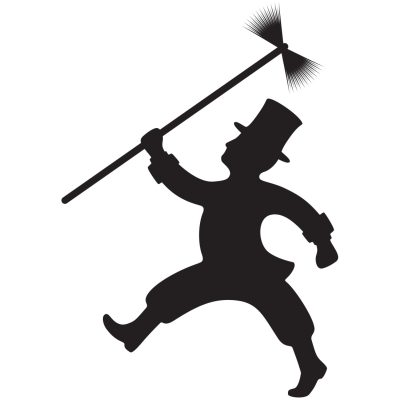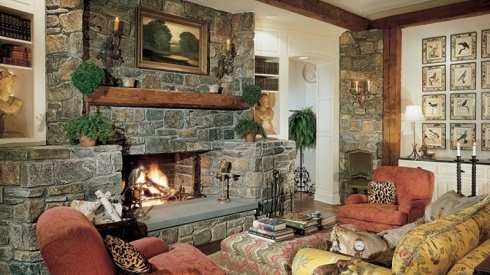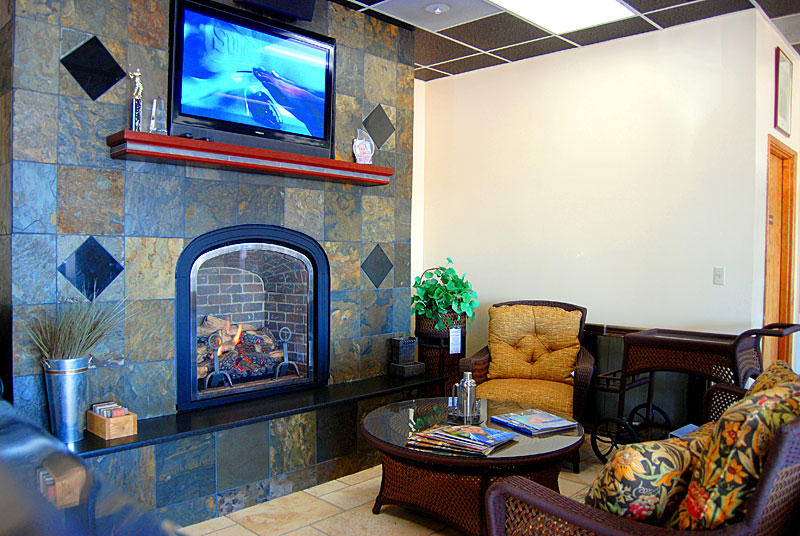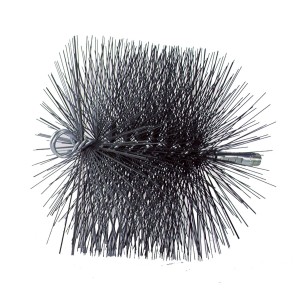
When you hear “chimney sweep,” you might imagine the ash-smeared character of Bert in Walt Disney’s Mary Poppins. Rest assured we’re not talking about that person with regard to chimney cleaning. Rather, we’re talking about the real deal, the hero that will rid your chimney of soot, dust, and creosote to protect your home from fire.
Know Your Chimney
Here’s the first thing you need to know about chimney cleaning: it’ s a dirty job. It’s also labor-intensive, meaning that if you intend to do the work yourself, you’ll need more than a simple broom. The best tool is a wire chimney brush, a slightly expensive investment well worth the protection it affords your home. You’ll need to measure your chimney’s flue with a tape measure to select a brush of the right size and shape; they come in multiple varieties to accommodate all chimneys.
You’ll also need to understand the type of chimney you have: masonry, prefab or hybrid. The first is made of typical brick and concrete, while the prefab is manufactured and installed as an entire unit. The hybrid chimney has masonry components along with a high-temperature pipe and steel frame.
Why Clean Your Chimney?
The point of cleaning the chimney is to prevent fire by eliminating creosote, a by-product of combustion. Most people recognize creosote as a thick, black substance that sticks to everything it touches. Its ability to adhere to your chimney makes it undeniably dangerous. Creosote starts fires.
In order for a chimney to catch fire, one-quarter inch or more of creosote must be accumulated in the flue. The flue must also reach an extremely high temperature, which is possible during repetitive use. In fact, a chimney can reach up to 2,000 degrees Fahrenheit. Such intense heat causes the creosote to ignite and burn rapidly.
Regular cleaning is the only way to prevent this fire hazard. The amount of cleaning you need depends on the efficiency of your fireplace, the presence of cracks or damaged parts and your level of use. The more you rely on your fireplace for heat, the more creosote that will accumulate. You must, therefore, plan on routinely checking the flue to ensure it stays clean.

Masonry fireplace. Photo courtesty of standout-fireplace-designs.com

Prefab fireplace. Photo courtesy of instylezone.com
Shine a high-powered flashlight up the flue to locate any obstacles like birds nests. Also, look at the extent of the creosote build-up to understand how much cleaning you need to do. Finally, ensure the chimney structure is safe and secure so you don’t cause additional damage during cleaning.
Chimney Cleaning Basics
It’s time to select the cleaning method most ideal for you and your home. The top-down with rod method provides the best cleaning results. You’ll need to attach a rod or multiple rods to your brush to ensure it can reach from the top of the chimney to the bottom. Climb to the roof and start at the top of the chimney, lowering the brush to the bottom so you clean the whole length. Repeat these steps until you think the chimney is clean. Check your efforts with a flashlight to ensure you’ve eliminated all debris.
If you don’t have a rod, you can use the top-down with weight method. This works in the exact same way as the rod technique, but you fasten a rope to the brush and then tie the ropes opposite end around a 20-pound weight. As before, lower the brush down the chimney holding onto the weight. You’ll want to ensure the rope is long enough so you can extend from top to bottom.
For those uncomfortable with climbing to the roof, you can use the bottom up with rod method. You stand inside the house at the bottom of the chimney and reach the brush upward to clean the flue. This technique is flawed in that you’re likely to get soot all over yourself and likely throughout the house as well. If you use this method, you will want to clear the area immediately around the chimney, put on your work clothes, and wear safety goggles.
Remember to close the cleanout door on your chimney before you start. You will also have to seal off the fireplace and wear protective gear for your face and clothing. After you clean, vacuum leftover soot from around your fireplace.
You Don’t Have to Do It Yourself
There is a very good chance that most of what was just explained above, doesn’t even sound like English. If that’s the case, or if you simply don’t have time to do it yourself this year, you can hire a trained technician to clean your flue. The Chimney Safety Institute of America (CSIA) recommends you contract a CSIA Certified Professional so you know you’re dealing with a credible provider. More information is available on the CSIA website, or you can contact one of the local professionals listed below, each of whom is CSIA Certified.
(734) 668-4780
Lead time is 2 to 3 weeks.
Cost is $199 for inspection and cleaning.
A certified chimney sweep cleans the flue using a mechanical spinning brush for a more thorough job. He or she then cleans all the main fireplace components and performs a complete inspection of the chimney inside and out. The sweep also looks for creosote build-up, chimney deterioration and proper ventilation. This company has been in business 34 years.
(517) 672-1413
Lead time is about 2 weeks.
The cost is $159 for cleaning and inspection. The certified chimney sweep looks over the fireplace and flue to ensure both are safe for burning.
(517) 423-2832
Lead time is 2 to 3 weeks.
Cost is $148 for evaluation and $278 for combined evaluation and sweep.
At Doctor Flue, a certified sweep first performs an 18-point interior and exterior examination of the flue to see if it needs to be cleaned. If it doesn’ t need cleaning, you’re not charged for that service. The sweep also goes to the rooftop and examines areas in and around the chimney to ensure there are no areas of concern. If the sweep does find something of alarm, he or she takes photos and reviews them with you. The sweep also takes a video scan of the flue interior to ensure it’s safe for burning. This company is a great resource for new homeowners because the inspection is so thorough.
If you’d like to know more about Chimney Sweeps we’d recommend, or how to do a thorough Chimney clean yourselves, Contact us!











